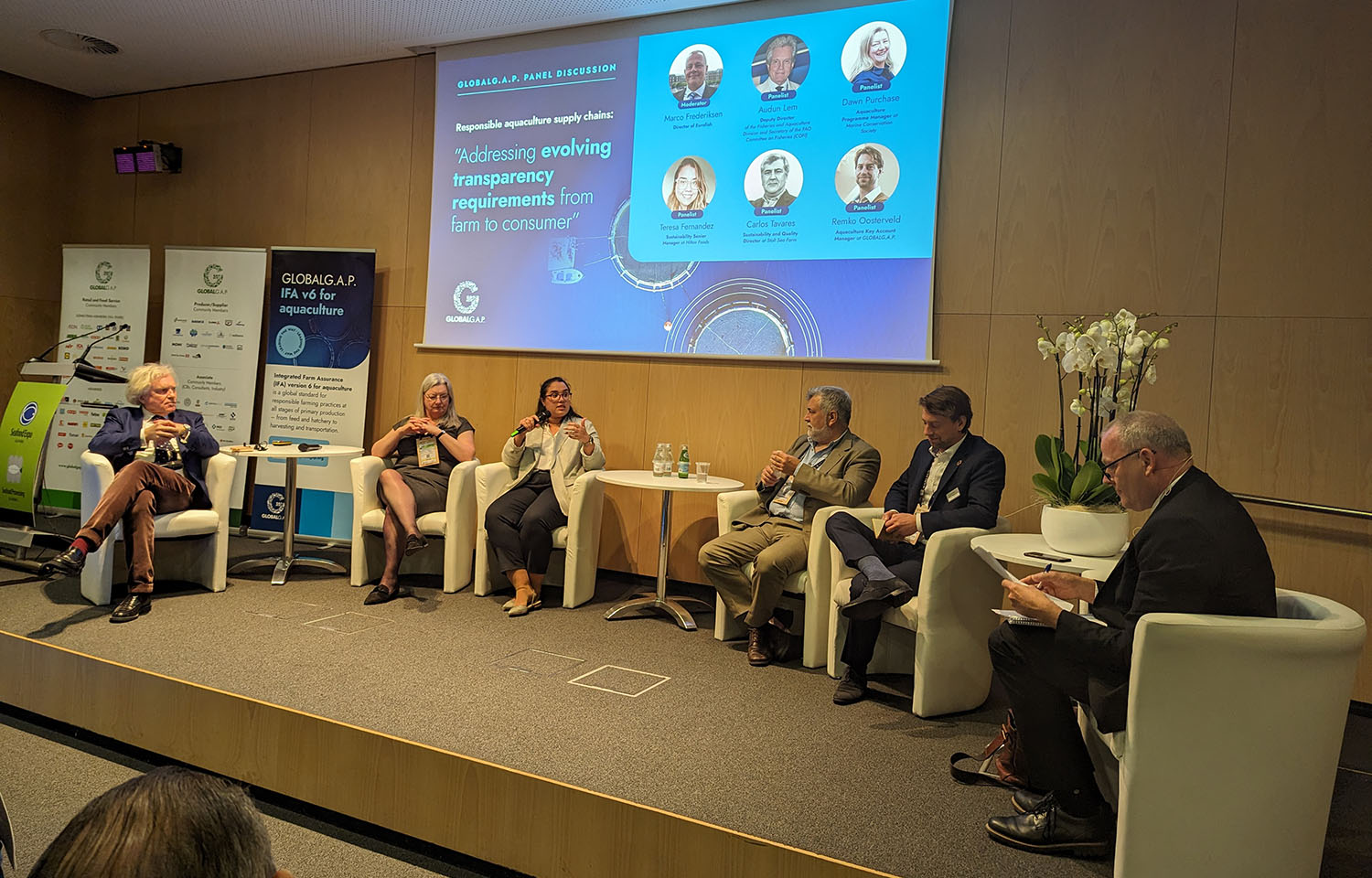Over the last decade, the expectations around sustainability certifications have expanded, and certification schemes need to work harder than ever to meet them, according to industry professionals who participated in a recent panel organized by GlobalGAP.
GlobalGAP first delved into aquaculture production in 2004, and 20 years later, the certification has undergone a number of transformations – including new standards. Those transformations are key to meeting some of the most prominent global trends in responsible aquaculture production, FAO Deputy Director of Fisheries and Aquaculture Audun Lem said during the panel, which took place during the 2024 Seafood Expo Global in Barcelona, Spain.
“When we talk about sustainability, today, we really have to be holistic. We have to think in all the three dimensions of sustainability, whereas some years ago, the focus was on environmental sustainability,” Lem said. “Now, social dimensions, civil rights, and decent work conditions are all very important components of a sustainability strategy from any company or organization.”
Lem said the FAO has been developing guidance documents on sustainability issues for aquaculture and the seafood industry, and that in July, the FAO’s Committee on Fisheries will be examining how to create standards that various sustainability and certification organizations can use as guideposts.
The FAO standards have long been central to both seafood companies and certification schemes. Particularly, the FAO’s sustainable development goals (SDGs) have been guideposts for companies and nonprofits, and seafood SDG 14 – “Life Under Water” – specifically has been a key document. According to Lem, this builds on FAO's collaboration with fisheries organizations in the past.
“Something we have developed on aquaculture in particular – guidance on sustainable aquaculture – includes guidance on all these different dimensions of sustainability,” Lem said. “We are confident that that will go through and be at a later stage adopted at a national level and become part of national legislation.”
Hilton Foods Sustainability Senior Manager Teresa Fernandez echoed Lem's hopes, stating that government legislation is increasingly on the table as a goal. However, that legislation and the reality supply chains are dealing with aren’t always aligned, she said.
“There is a difference between what legislation is asking us to do and perhaps what the U.K. retailers have been asking for a while,” Fernandez said.
From her perspective, the bridge joining industry and legislation is transparency.
“In our supply chains in the U.K., we’ve been a bit more focused on transparency to understand the social and environmental concerns and animal welfare, and now, we need to extrapolate that to the rest of the [industry], which is quite a challenge,” Fernandez said.
She said the challenge mainly comes from the complicated nature of seafood supply chains and the fact that verification adds new layers of complexity.
As organizations continue to consider those layers and how to tackle sustainability, welcoming new ideas to tackle challenges is important, Stolt Sea Farm Sustainability and Quality Director Carlos Tavares Ferreira said.
Ferreira said ingredient sourcing is one of the main challenges facing his business, given its need to access the right feed. Stolt Sea Farm raises turbot and sole in a land-based facility in Spain, giving it unique aquaculture feed needs that pose challenges to sustainability.
“How can we formulate healthy diets for fish that can also bring all the healthy characteristics for the final product, or the end consumer, without disrupting the supply chain?” Ferreira said.
Currently, aquaculture feed has a heavy dependency on marine-based ingredients, which pose problems for long-term sustainability as the industry’s demand for feed continues to grow.
“How can we substitute ingredients and decrease our, let’s call it a dependency, on fish?” Ferreira said. “This is a huge challenge.”
One avenue that could be tried is moving toward ...








